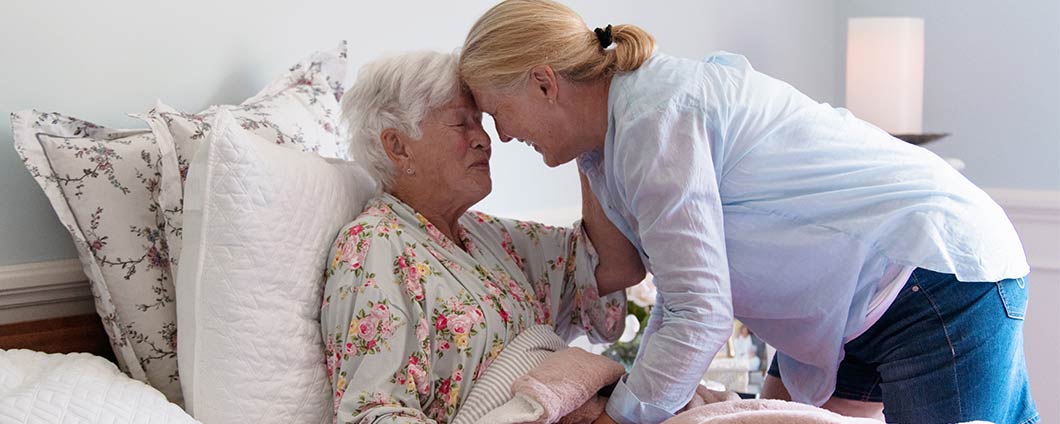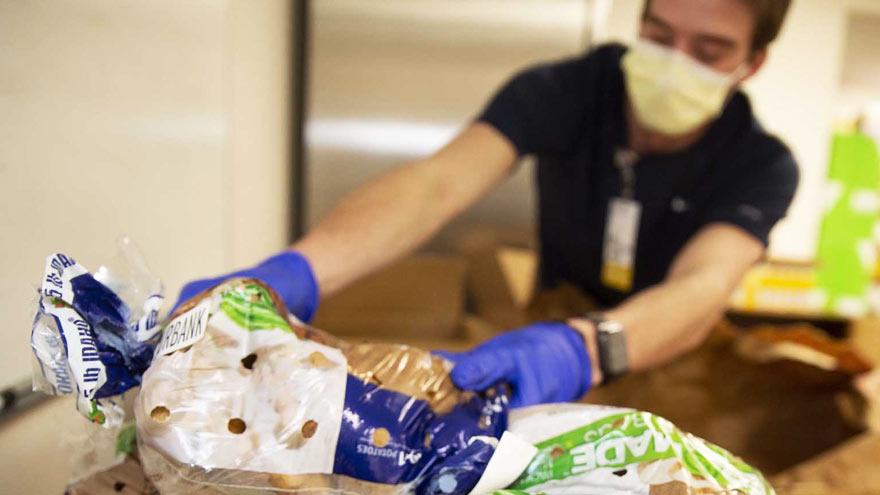Search
-
Palliative and Supportive Care
Compassionate Care Palliative and Supportive Care provides specialized medical care for serious illnesses and diseases, including advanced kidney failure or heart disease. Palliative Care helps to: Prevent and relieve suffering to help build the best possible quality of life. Add value to standard therapies by assisting with advanced illness planning and symptom management. Palliative & Supportive Care may be needed if: You've had multiple hospital admissions for severe illness. Severe pain, nausea, fatigue or other symptoms impacting quality of life and you are reconsidering treatment plans. Treatments are no longer working. You're feeling hapless or discouraged about the future due to your serious illness. Talk to your doctor to find out if palliative care is the right choice for you or your family member. Your Care Team Your palliative care support team comprises doctors, nurses, chaplains, social workers and other specialists who work together with you to provide extra support. Your care team can help: Facilitate close communication between you and your physician team, as well as nurses and specialists. Offer medical assessments and symptom management to help reduce pain, nausea, fatigue, shortness of breath and anxiety. Improve the ability to tolerate medical treatments and fain the strength to live a productive daily life. Explain treatment options and the decision making process regarding care. Navigate the healthcare process. Lend emotional and spiritual support.
-
Hospice Care
When medical treatments no longer offer a cure, Hospice Care offers a special way to care for you and your family who are faced with a life-limiting illness. Serving Washoe, Lyon, Storey and Carson Counties, our team is available 24 hours a day, seven days a week. Hospice staff receive special training to care for all types of physical and emotional symptoms that cause pain, discomfort and distress. When considering your options for end-of-life transition, our team is available to answer questions and discuss if Renown Hospice Care will meet your needs. Your hospice care team includes Medical Director Registered Nurses Certified Nursing Aides Medical Social Workers Chaplains Registered Dietitians Trained Volunteers
-
Renown Health Food Pantry Nourishes Patients in Need
Unfortunately, many in our community go to bed hungry. Thanks to the support of the Food Bank of Northern Nevada and other local partners, Renown’s food pantry is helping meet the food needs of homeless and low-income individuals in our community. Patients who qualify for the “Food is Medicine Prescription” can receive a bag of food for themselves and each member of their immediate family every week through a free assistance program. This project started last year when Renown began giving food support to hospital and emergency room patients who expressed the need. Food is also given out at the Healthcare Center, which provides affordable access to care for anyone in our community. Those who receive care at the Healthcare Center are also eligible for food assistance. Working Alongside the Community After receiving food deliveries from the Food Bank of Northern Nevada, Renown’s community health team collects an assortment of fresh produce, donated from local grocery stores and other community organizations. Then they put together one bag for each family filled with healthy foods, such as: Whole grain cereals Shelf stable milk Kid-friendly snacks (granola bars, popcorn, graham crackers Proteins (low-salt soups, stews, peanut butter) Seasonal produce Food is Medicine Prescriptions Continue Amidst the Pandemic Throughout the COVID-19 (coronavirus) pandemic, Renown’s community health workers have been working remotely. They continue to reach out to patients who need groceries from the Food is Medicine Prescription program. With this in mind, the food pantry staff is currently coordinating outpatient deliveries to those with a Food is Medicine Prescription. At present, Renown is working to get more refrigeration, shelving and staffing to expand the service to more Renown Medical Group patients in need of food.
Read More About Renown Health Food Pantry Nourishes Patients in Need
-
Keeping Kids Safe on Halloween
Halloween is around the corner. So while you're prepping pumpkins for carving, putting together creative costumes and coordinating trick-or-treating plans, safety is one more detail to remember. Masks, haunted houses, witches, ghosts and ghouls — it all spells Halloween, and what could be more frighteningly fun, right? For children, however, Halloween can indeed be frightening and not so fun. According to Dr. Kristina Deeter, Physician-in-Chief of Renown Children’s Hospital and Chair of Pediatrics for the University of Nevada, Reno School of Medicine, it is common for younger children to express Halloween fears — being afraid of monsters, the dark or really anything out of the norm. “It's normal for children to struggle with separating reality from fantasy,” she explains. For children who fall into this category, the month of October can be traumatizing. Halloween may not come until the end of the month. Still, in the weeks building up to the spookiest night of the year, little ones are bombarded on all sides with decorations — mummies, skeletons, coffins, vampires, you name it. For a child with a blossoming imagination who, as Dr. Deeter said, is still learning to differentiate real from pretend, this can cause additional fears and anxieties. In commemoration of Halloween Safety Month, Dr. Deeter shares safety tips for the spooky holiday from the American Academy of Pediatrics: Dressing Up & Heading Out Plan costumes that are bright and reflective. Ensure shoes fit well and that costumes are short enough to prevent tripping, tangling or coming into contact with flames. Consider adding reflective tape or striping to costumes and trick-or-treat bags and baskets for greater visibility. Masks can limit or block eyesight. Instead, consider non-toxic makeup and hats, which should fit properly to prevent them from sliding over the eyes. Test makeup ahead of time on a small patch of skin to test for allergies before full application. When shopping for costumes, wigs and accessories, look for and purchase those with a label clearly indicating they are flame resistant. If a sword, cane or stick is a part of your child's costume, make sure it is not sharp or long. A child may be easily hurt by these accessories if he stumbles or trips. Do not use decorative contact lenses without an eye examination and a prescription from an eye care professional. While the packaging on decorative lenses will often make claims such as "one size fits all," or "no need to see an eye specialist," obtaining decorative contact lenses without a prescription is both dangerous and illegal. This can cause pain, inflammation, serious eye disorders and infections, which may lead to permanent vision loss. Review with children how to call 9-1-1 (or their local emergency number) if they ever have an emergency or become lost. Carving Pumpkins Leave the carving to the grownups. Have children draw the pumpkin design with markers, but keep knives away. Consider using a flashlight or glow stick instead of a candle to light your pumpkin. If you do use a candle, a votive candle is safest. Candlelit pumpkins should be placed on a sturdy table, away from curtains and other flammable objects, and not on a porch or any path where visitors may pass close by. They should never be left unattended. Prepping Your Home Keep your entryway safe for trick-or-treaters by removing all items from the porch or front yard that a child could trip over, like garden hoses, toys, bikes and lawn decorations. To ensure visibility, check outdoor lights and replace burned-out bulbs. Sweep leaves (or snow) from sidewalks and steps. If there are dogs in the home, take steps to ensure they don't jump on trick-or-treaters. Hunting for Treats Young children should always be accompanied by a parent or responsible adult. Give each child and adult a flashlight (with fresh batteries). If older children are heading out to trick-or-treat alone, plan and review a route you can agree on, as well as a specific time they are supposed to return home. Only visit homes with a lit porch light. Never enter a home or a car for a treat. Notify law enforcement authorities of any suspicious or unlawful activity immediately. Since pedestrian injuries are the most common injuries to children on Halloween, remind youngsters to take crosswalk safety precautions. For more key tips regarding Halloween safety for your young trick-or-treaters, visit our partners at Safe Kids Worldwide for a variety of spooky safety resources.




